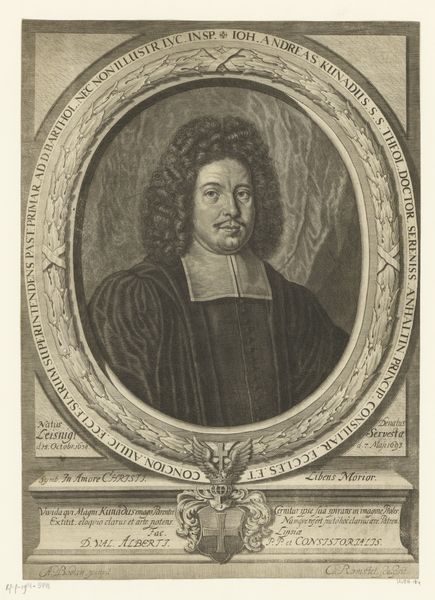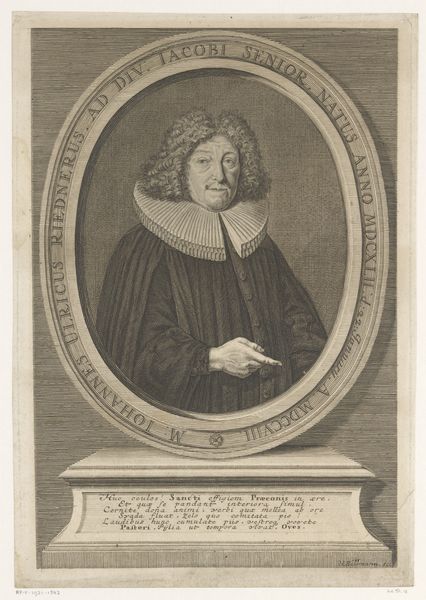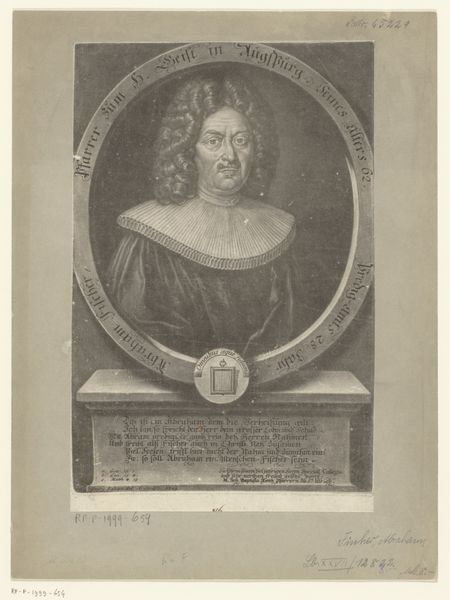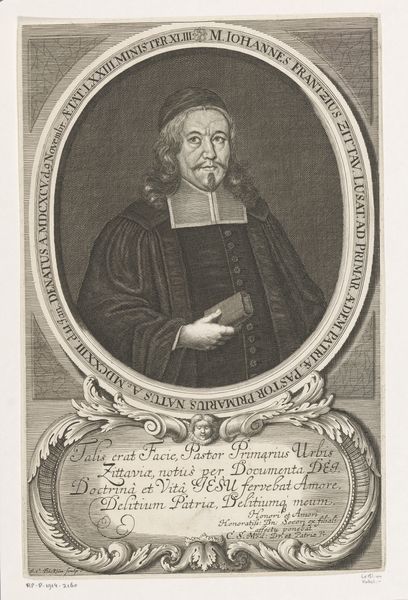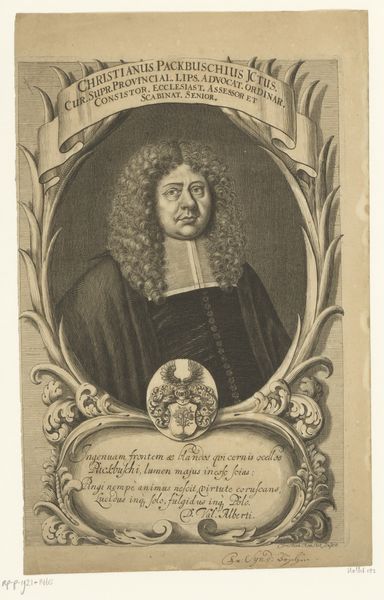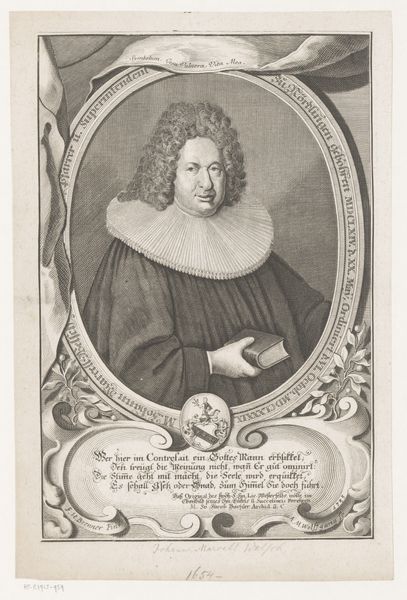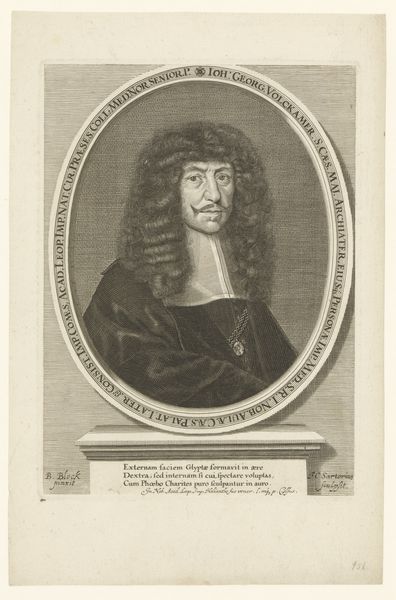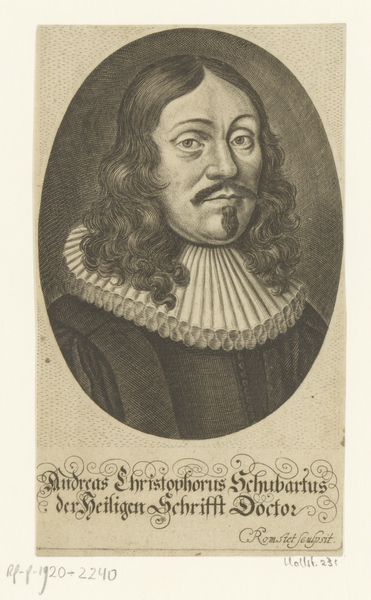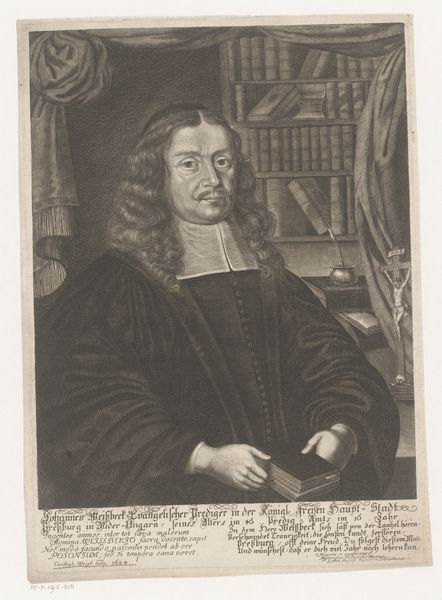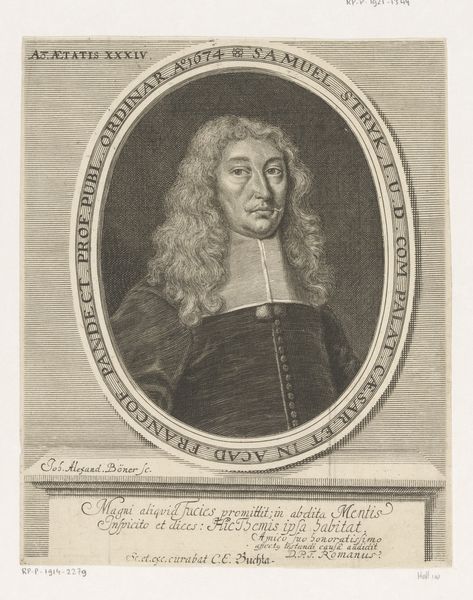
print, engraving
#
portrait
#
baroque
# print
#
history-painting
#
engraving
Dimensions: height 304 mm, width 195 mm
Copyright: Rijks Museum: Open Domain
Curator: Here we see "Portret van Andreas Harder op 53-jarige leeftijd," or "Portrait of Andreas Harder at Age 53," an engraving made in 1701. Editor: My immediate impression is somber; it has such weight, visually speaking. The texture and details are compelling. It strikes me as almost scientific in its precise execution, despite being a portrait meant to capture a man’s likeness. Curator: Indeed. It’s a baroque portrait, showcasing Andreas Harder, likely a figure of some religious importance given the inscription below and his stern demeanor. Think about the context: portraiture in this period served to communicate power and status within strict social hierarchies. His clothing, the wig, the prominent ruff collar—they all contribute to the image of authority. Editor: Absolutely. And I wonder about the engraving process itself. Look at the labor invested in rendering his garments, or even his elaborate hair. There's the material reality: the paper, the ink, and the artist's tools. It points to the craft inherent in artmaking of this era. The material itself speaks of societal structures as well; it required skilled labor, resources, a patron. Curator: Good point. We could also think about this through a post-colonial lens, recognizing Harder's social power embedded within a system that prioritized specific identities, largely excluding women and people of color from similar representations. This artwork, therefore, becomes an artifact embodying historical disparities. Editor: Right, the means of production reflects class. Who had the ability to sit for and commission an artwork? How does the production contribute to existing historical hegemonies and imbalances? The material and methods show this piece’s placement in its cultural and economic history. Curator: Looking at it this way encourages critical engagement with historical narratives—questioning whose stories are told and how. It enables conversations that confront difficult truths about societal inequalities present in the artwork, then and now. Editor: For me, understanding how that texture came to be opens it up. It isn't simply an image; it is a demonstration of physical labor undergirding status and creating the means for images to perpetuate. Curator: I agree that understanding both materiality and historical context creates a fuller, more critical appreciation for art's role within culture. Editor: It becomes about labor, resources, the human element in creation and social forces—a dialogue between process and portrait.
Comments
No comments
Be the first to comment and join the conversation on the ultimate creative platform.
